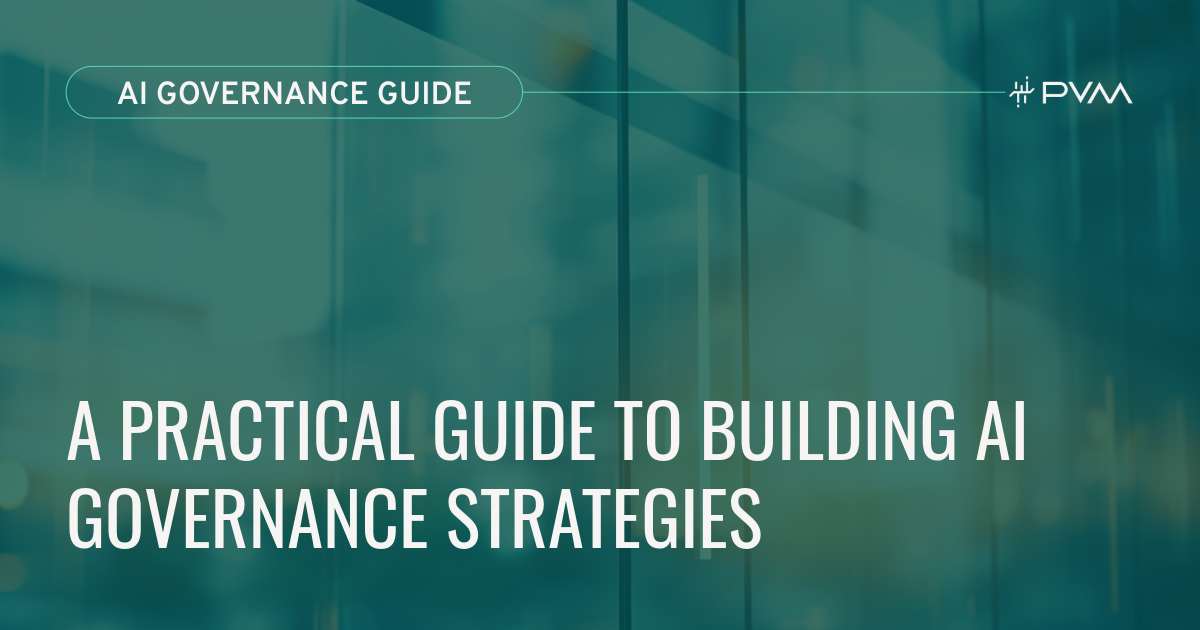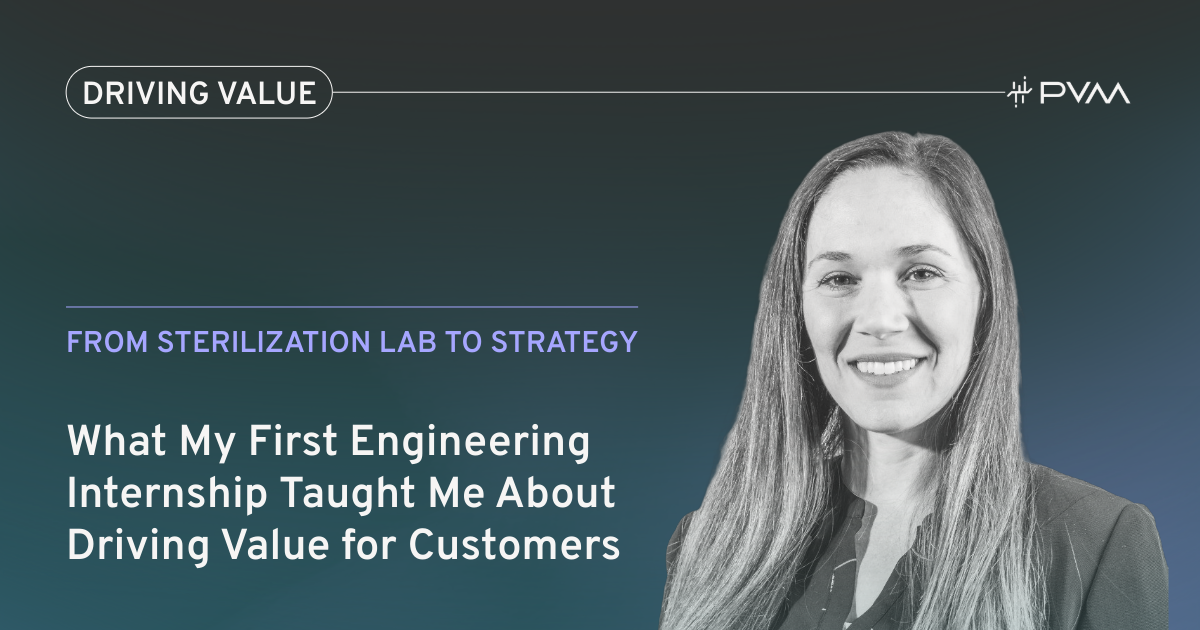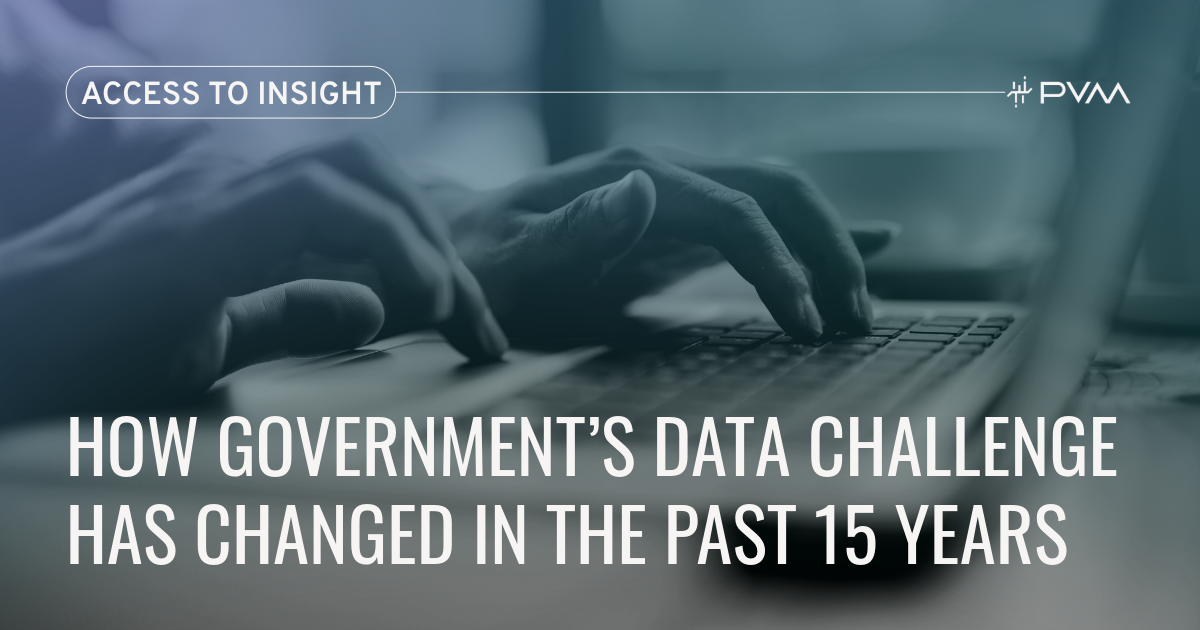By: Hannah Zenas and Shaina Read
Artificial Intelligence (AI) is no longer a future-state capability for the U.S. government—it’s a present-tense priority. As of December 2024, 37 federal agencies reported 1,757 AI use cases, reflecting a 147% year-over-year increase. This surge signals not just growing interest, but an urgent push to harness AI to achieve mission-critical goals like operational efficiency, modernized service delivery, and data-informed decision-making.
In response to this momentum, the White House released updated guidance in this Fact Sheet designed to fast-track—but responsibly govern—AI adoption. The directive provides guidance intended to streamline acquisition, elevate Chief AI Officers as organizational catalysts, and embed privacy safeguards from day one. By reframing AI governance as a strategic enabler rather than a compliance burden, the Office of Management and Budget (OMB) is laying the foundation for scalable, safe, and future-ready innovation, outlined best in its April 2025 memo on accelerating federal use of AI.
Critically, agencies now face a clear deadline: by the end of September 2025, they must submit AI strategies that not only address barriers to adoption but also drive enterprise-wide maturity in AI use. To meet this mandate, agencies must prioritize the development of strategic, secure, and scalable governance frameworks.
PVM stands ready to support this shift. As a proven partner in government digital transformation, we bring deep expertise in designing and operationalizing AI solutions that align with federal policy, accelerate implementation, and embed trust from the outset. Our approach helps agencies not just comply with the latest mandates—but lead with confidence in this new era of AI-driven public service. To help agencies navigate this transition effectively, we’ve developed a practical "best practices" framework for crafting AI governance that is actionable, aligned, and adaptable. This framework outlines key considerations and steps agencies can take to responsibly and confidently integrate AI into their operations.
What is AI Governance
AI governance refers to the framework of policies, processes, and structures that guide responsible development, deployment, and oversight of artificial intelligence systems. These rules promote ethical and transparent use of AI in alignment with organizational values, legal requirements, and societal expectations. Effective AI governance addresses issues such as data privacy, algorithmic bias, accountability, risk management, and compliance, helping organizations balance innovation with trust and safety.
Why You Need AI Governance to Accelerate Adoption
Contrary to common perception, the current administration isn’t calling for less oversight of AI. Instead, it advocates for smarter, more focused frameworks that reduce red tape. Emerging technologies like AI present uncharted territory, and when agencies face the unknown, they often lack established protocols tailored to these innovations—resulting in bottlenecks and delays.
Without clear, repeatable models designed specifically for AI, agencies must navigate cumbersome processes that slow acquisition and deployment, leaving organizations struggling to keep pace with rapid advancements.
Introducing targeted guidance for AI implementation and management can streamline these processes. By establishing the right structures from the outset, agencies create scalable, repeatable frameworks that eliminate unnecessary barriers. Rather than hindering progress, thoughtful oversight empowers agencies to innovate responsibly and confidently while maintaining accountability and trust.
In short, adopting well-designed AI frameworks isn’t about adding hurdles—it’s about removing them by building the right foundations upfront. This approach enables government agencies to harness AI’s transformative potential swiftly, safely, and sustainably.
Best Practices for Developing Government AI Governance
As mentioned above, by the end of September 2025, government agencies are required by the Office of Budget and Management’s memo to develop an AI strategy “for identifying and removing barriers to their responsible use of AI and for achieving enterprise-wide improvements in the maturity of their applications.” It is critical that as part of this planning, agencies develop strategic, secure, and scalable governance foundations.
Here are some best practices to guide agencies that are working on building these plans:
1. Structure Governance from the Top Down
Establish a clear operating model for AI oversight:
- A strategic layer (governance boards, executive sponsorship)
- A tactical layer (CAIO, risk officers, data stewards)
- An operational layer (technical teams managing tools and models)
In successful implementations, these layers can be defined using clear RACI (responsible, accountable, consulted, informed) structures that assign responsibility and accountability across the enterprise. Many agencies are establishing cross-functional working groups—comprising legal, cybersecurity, ethics, and technical leads—to guide their approach. Platforms like Palantir Foundry can support these efforts by creating shared operational environments that ensure governance policies are implemented consistently across data and AI workflows.
2. Start with Data
Effective data management is the first step toward proper use of AI. Before any model is tested, trained, or deployed, agencies must ensure their data ecosystems are ready. AI systems are only as strong and trustworthy as the data they’re built on. That means investing in the fundamentals: access, quality, lineage, and governance.
- Inventory and Classify Data Assets
- Ensure Data Quality and Structure
- Establish Clear Data Lineage and Governance
- Implement Secure and Equitable Access Controls
This foundation can be strengthened through data integration platforms that allow for real-time lineage tracing, automated quality checks, and scalable governance policies.
PVM brings deep experience in orchestrating data readiness efforts—modernizing data pipelines, resolving fragmentation, and establishing robust access policies. Our approach balances technical precision with organizational awareness, helping clients build secure, mission-aligned data ecosystems that are AI-ready from the ground up. Whether using COTS tools or custom solutions, we ensure your AI strategy is anchored in trustworthy data.
3. Manage Risk Proactively
Use the NIST AI Risk Management Framework to:
- Classify AI systems by potential impact
- Identify and mitigate bias, drift, and transparency risks
- Incorporate adversarial testing and continuous validation
To operationalize these principles, agencies should maintain detailed model documentation (such as model cards or system data sheets), conduct structured red-teaming exercises, and enable continuous monitoring for performance degradation.
PVM can support the operationalization of AI risk frameworks through tailored implementation roadmaps, model risk playbooks, and automated monitoring approaches. We help agencies embed resilience into AI pipelines, ensuring risk mitigation is not just documented—but executed in real-time. Our teams routinely lead engagements that bridge policy and practice, ensuring alignment to evolving federal mandates and frameworks.
4. Center Ethics and Equity
Agencies should prioritize fairness, accessibility, and human oversight. This means ensuring all generative AI tools:
- Are evaluated for discriminatory outcomes
- Provide human-in-the-loop options
- Comply with data privacy and civil rights regulations
Embedding ethical considerations throughout the model lifecycle is key—from problem framing to deployment. Many agencies are adopting audit frameworks that evaluate disparate impacts while ensuring models can be paused, overridden, or adapted based on human review.
PVM advises clients on how to design workflows, audits, and oversight that prioritize civil rights, equity, and transparency. We help connect ethics with execution, guiding procurement language, oversight tooling, and engagement models that uphold public trust and statutory compliance.
5. Promote Transparency
Whether through watermarking generated content, clear disclosures, or public-facing AI system registries, visibility is key. This builds public trust and supports compliance.
Transparency also extends to internal stakeholders. Agencies should prioritize building explainability into AI tools—such as visualizing the reasoning behind outputs using SHAP or LIME techniques—and maintain robust audit logs that document how models behave over time.
PVM works with agencies to implement transparent AI workflows, including model observability, explainability tooling, and decision documentation that can withstand both internal audit and public scrutiny. We help build bridges between technical implementation and policy compliance, ensuring responsible AI use is auditable, explainable, and defensible.
6. Pilot Before You Scale
Start with small, secure pilot programs for generative AI—such as chat assistants for internal operations or document summarization tools—before rolling out larger implementations.
Pilots should be mission-aligned, well-instrumented, and evaluated not just on technical performance but on impact, usability, and risk.
PVM brings a proven model for responsible AI piloting, combining mission use case selection, secure development environments, and rapid feedback loops. We help agencies structure pilots that deliver value quickly while generating the insights needed for responsible scaling. Our teams remain engaged from ideation through deployment, ensuring lessons learned are translated into sustainable enterprise AI strategies.
Let’s Build a Responsible Future Together
PVM is committed to helping public agencies harness the power of generative AI responsibly. Whether you’re just starting or already piloting AI tools, we’re ready to support you with deep public sector expertise, secure deployment capabilities, and a practical approach to governance.
Let’s build a responsible AI future together.
Reach out to us here to learn how PVM can support your mission with practical, secure, and scalable solutions.
Frequently Asked Questions (FAQ)
What is AI governance in the federal government context?
AI governance is the set of policies, processes, and oversight structures that guide the responsible development, use, and monitoring of artificial intelligence in federal agencies. It ensures AI systems align with legal, ethical, and operational standards while promoting transparency, security, and trust.
Why is AI governance important for government agencies?
AI governance helps agencies accelerate AI adpoption, avoid risks like bias or security vulnerabilities, and ensure compliance with laws and mandates. It enables scalable, repeatable AI implementation by creating clear structures for accountability, risk management, and ethical oversight.
What is the role of a Chief AI Officer (CAIO)?
A Chief AI Officer is a senior leader responsible for coordinating and accelerating the adoption of AI within a federal agency. They serve as an internal catalyst for AI strategy, risk management, and governance alignment across departments.
How can agencies accelerate AI adoption?
Agencies can accelerate adoption by:
- Building governance structures early (top-down and cross-functional)
- Preparing high-quality, well-governed data
- Implementing a proactive risk management strategy
- Considering transparency
- Piloting tools before enterprise rollout
What are best practices for implementing AI in government?
Some key best practices include:
- Starting with strong data foundations
- Embedding ethics and equity from the outset
- Using risk-based classification and controls
- Ensuring transparency for stakeholders
- Running pilot programs to validate and refine AI use
How does PVM support federal AI initiatives?
PVM helps public sector organizations design and implement strategic AI governance frameworks, modernize data systems, manage AI risk, and deploy responsible, scalable AI solutions. As a Palantir partner, PVM specializes in the Palantir AIP platform. We partner closely with agencies to align AI efforts with federal policy and mission goals.
How can I get started with AI governance at my agency?
You can begin by:
- Forming a governance structure with clear roles
- Conducting a data readiness assessment
- Identifying a small-scale, mission-relevant pilot
- Partnering with experienced implementation providers like PVM











 Hannah Zenas
Hannah Zenas



